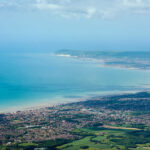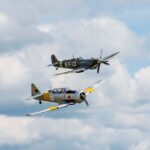Waltham to Lydd
In January 2015, on a winter’s day, I flew from White Waltham to Lydd. Takeoff was delayed due to an accumulation of ice that had built up on GOFIT overnight. Having brushed off the worst of the ice, I wait for the sun to deal with what was left. The first part of the flight was carried out under a layer of cloud. Past Shoreham, the skies were clear all the way to Lydd.
One of the images shows two acoustic mirrors. These are passive devices used to reflect and perhaps to focus (concentrate) sound waves. Parabolic acoustic mirrors are widely used in parabolic microphones to pick up sound from great distances, employed in surveillance and reporting of outdoor sporting events. Pairs of large parabolic acoustic mirrors, which function as “whisper galleries” are displayed in science museums to demonstrate sound focusing.
Between the World Wars, before the invention of radar, parabolic sound mirrors were used experimentally as early-warning devices by military air defence forces to detect incoming enemy aircraft by listening for the sound of their engines. During World War 2, on the coast of southern England, a network of large concrete acoustic mirrors was in the process of being built when the project was cancelled due to the development of the Chain Home radar system.





Leave a comment